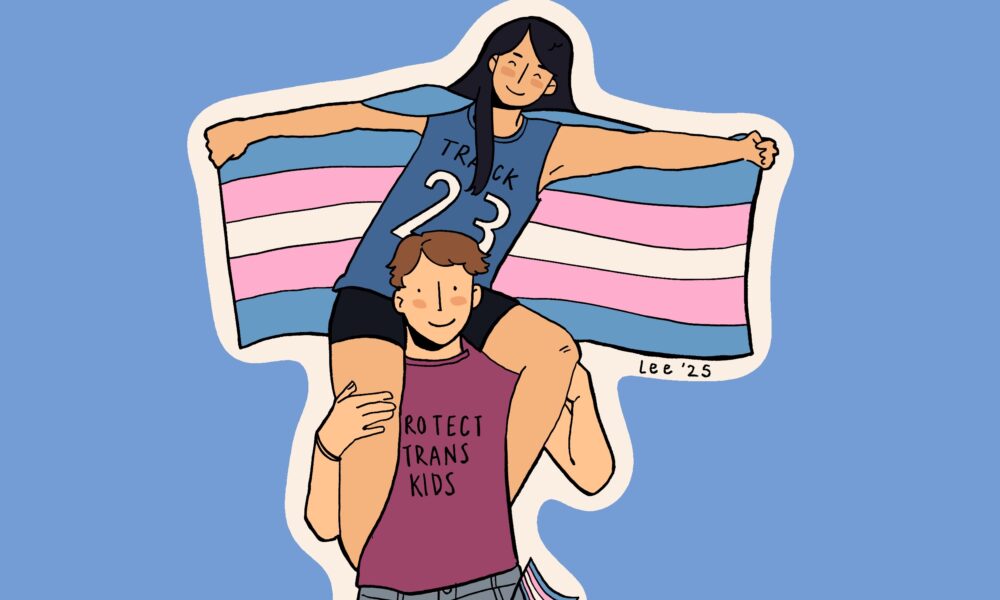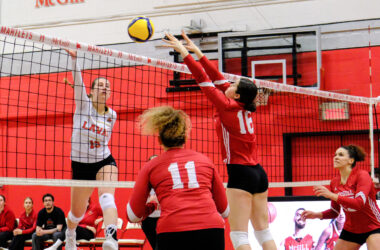Since the start of Trump’s second term, the U.S. has seen a slew of executive orders, policies, and lawsuits attacking a fundamental right for transgender youth—the ability to play sports. Last week alone, the U.S. Department of Agriculture froze funds to educational programs in Maine due to the state’s support of trans athletes, the Nevada Interscholastic Activates Association ruled it would no longer allow trans girls to play on women’s high school sports teams, and a similar proposed ban in Washington gained support from Congressman Dan Newhouse.
Prejudiced policy directed toward trans youth is not just an American issue though; in 2024, Alberta Premier Danielle Smith announced a series of policy resolutions which included banning or severely limiting trans women and girls’ access to sports and even prohibiting puberty blockers for trans youth. Amid this onslaught, it is crucial that the rights of trans children to play sports be taken seriously by all.
The Olympic Charter outlines access to play sports as a human right. For children, sports provide numerous physical, emotional, and social advantages that such policies aim to strip away. For trans kids—many of whom face harm from others for their gender identity—participation in sports can be invaluable in terms of self-esteem and academic performance. A study from the Human Rights Campaign Foundation and the University of Connecticut found that trans high schoolers who played sports experienced lower levels of depression and earned higher grades. Forcing them out of one of the most prominent public spaces is not just a cruel erasure—it is deeply dangerous.
Arguments in favour of banning trans kids from sports often insist on the right to fair play for cisgender girls—in the American context, this means the persistent invocation of Title IX, a federal civil rights law that prohibits sex-based discrimination in educational programs, including school sports. These arguments ignore that there is no compelling empirical evidence that trans girls have a biological advantage in sports. Further, sports are otherwise unfair due to a plethora of biological or socioeconomic factors. An athlete can have a competitive advantage by being taller, having higher endurance, or being able to afford extra training, regardless of gender.
The twisting of Title IX is a bad-faith argument, veiling bigotry with a self-righteous call for girls’ rights. If the self-proclaimed proponents of Title IX really cared about girls’ well-being, they would care about all girls. If it was really about girls’ safety, they would be talking about the factors that lead girls to drop out of sports, such as social stigma, ubiquitous misogyny, and the scrutiny of women’s bodies. This selective advocacy shows that it has never been about cisgender girls and women; it is about pushing an agenda of what they believe gender should look like. Trans peoples’ participation in sports is an easy target for conservatives because it attacks a small minority in one of the largest public arenas—an incredibly gendered one, no less.
Banning trans kids from sports opens the door to even more discriminatory policy, sidelining, and erasing any deviation from a strict gender binary. This should be seen not just as an attack on the trans community but also as an assault on all kinds of free gender expression.
When it comes to combatting these heinous measures, it must be all hands on deck. Of the roughly 300,000 trans kids aged 13 to 17, two-thirds live in states that have enacted laws restricting their access to play. The scale of these policies is enormous and expanding each week. Cisgender allies must recognize that these policies threaten the well-being of children. Protecting the next generation is the biggest responsibility of all.










